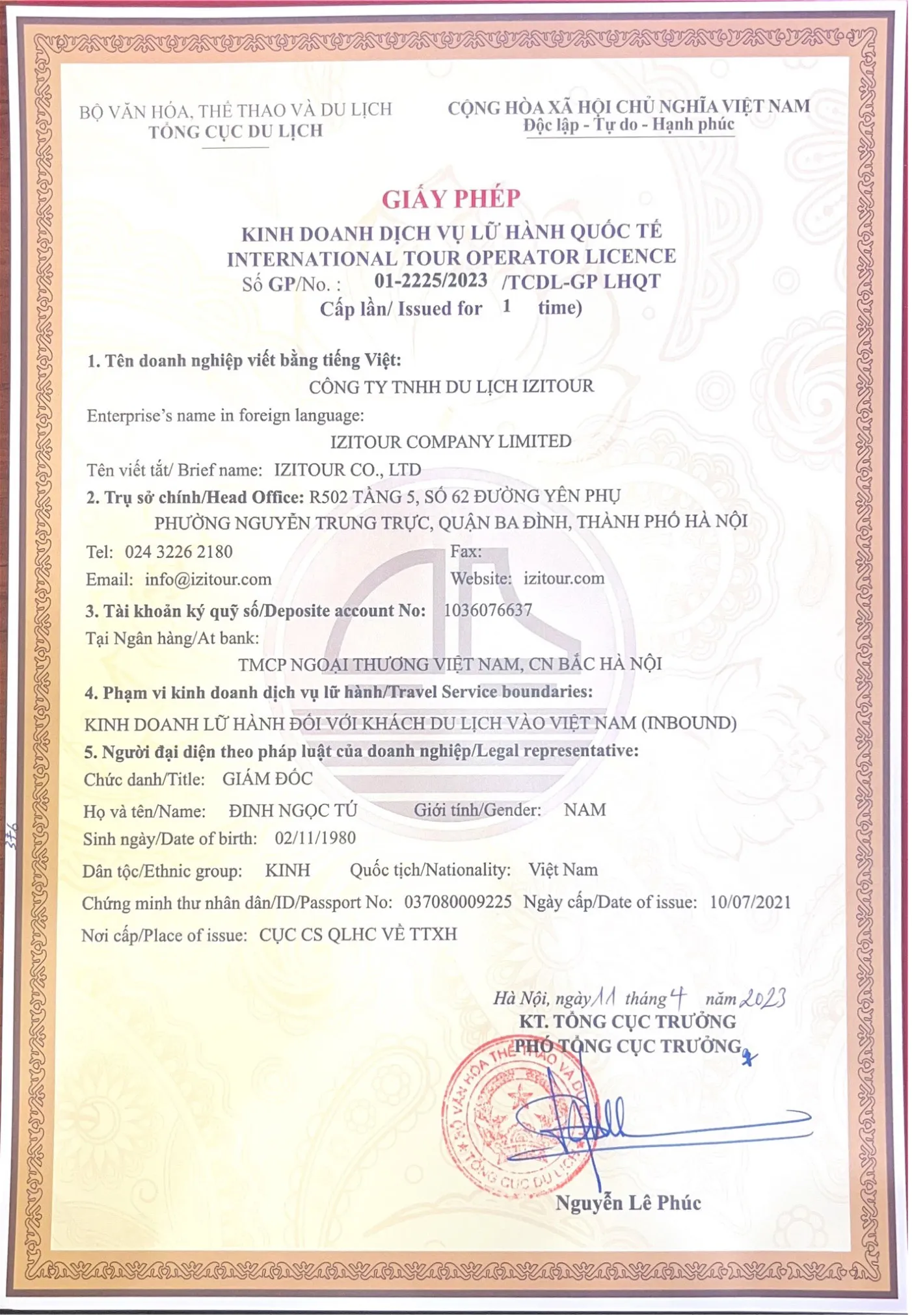Discover the breathtaking beauty of Mai Chau Valley with our ultimate travel guide — your go-to resource for things to do, from scenic treks to authentic cultural experiences.
Looking for a peaceful escape from Vietnam’s busy cities? Mai Chau is a quiet valley in Northwest Vietnam, just a few hours from Hanoi, known for its rice fields, stilt house villages, and slow pace of life. If you're visiting Vietnam for the first time, traveling with family or friends, and want something authentic yet easy to reach, Mai Chau is a great choice. In this guide, you'll find everything you need to plan your trip — what to see, what to do, how to get there, when to visit, where to stay, and sample itineraries to help you explore.
1. Why Visit Mai Chau, Vietnam?
Mai Chau is where you go to slow down. This quiet valley in northwest Vietnam offers an authentic glimpse into rural life, far from the noise of big cities and tourist hotspots.
What sets Mai Chau apart is its simplicity — and its sincerity. Life here revolves around nature, tradition, and community. You’ll find wooden stilt houses set against lush rice paddies, narrow paths winding through small ethnic villages, and a calmness that feels almost timeless. It’s not polished or curated for visitors, and that’s exactly why it’s so special.
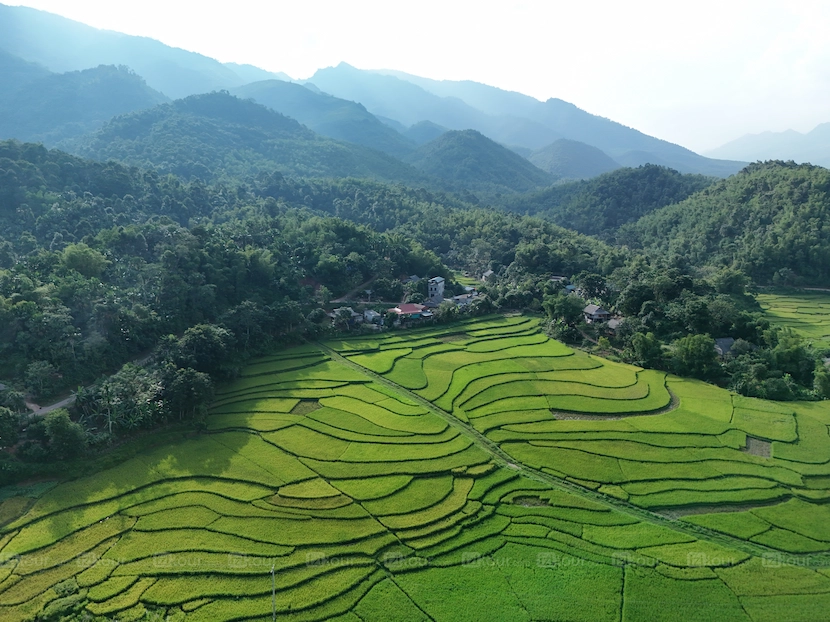
The region is home to a mix of ethnic minority groups, including the Thai people who make up the majority. Their influence is woven into every part of daily life — from the distinct architecture and handmade textiles to the hospitality that defines a stay here. Community-based tourism is a big part of Mai Chau’s appeal. Many locals open their homes to travelers through homestays, offering not just a place to sleep but a chance to eat, talk, and connect.
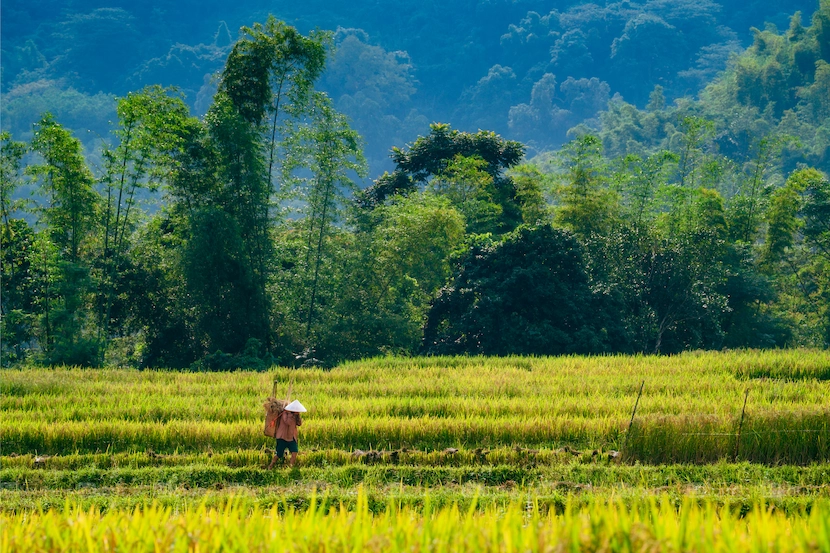
There’s no rush in Mai Chau. You might wake to the sound of roosters, have breakfast while overlooking the rice fields, cycle between quiet villages, or sit by a fire sharing rice wine with your hosts. The experience isn’t about ticking off sights — it’s about being present in a place where life moves at a gentler pace.
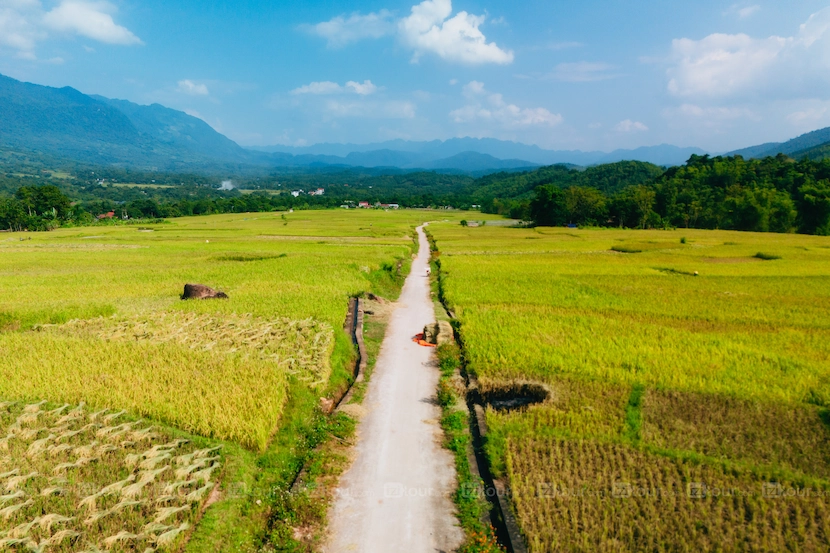
For anyone visiting Vietnam and looking for something more meaningful, more rooted, and more real — Mai Chau offers exactly that.
2. What to See in Mai Chau
Mai Chau is made up of quiet valleys, forested hills, and scattered villages — each offering something unique. Exploring the area means stepping into small communities, observing local life, and soaking up the peaceful scenery that stretches in every direction. Wondering what to do in Mai Chau? Here are some of the top Mai Chau attractions that blend culture, nature, and unforgettable experiences.
2.1. Thung Khe Pass
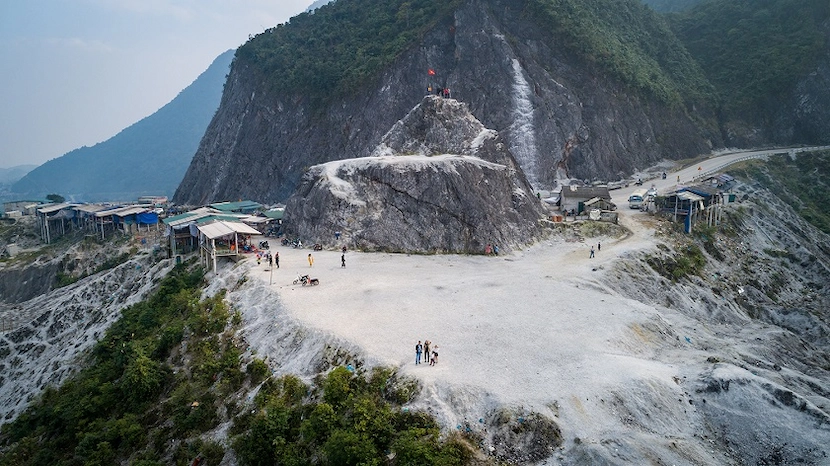
Also known as the White Stone Pass, Thung Khe is one of the most scenic stops on the way to Mai Chau. Sitting at around 1,000 meters above sea level, the pass offers sweeping views of the valley below — with layers of misty mountains, rice fields, and winding roads. The viewpoint is especially popular at sunrise and sunset. You’ll also find a small roadside market here, where local vendors sell grilled corn, sticky rice, hot tea, and sugarcane juice — perfect for a quick break with a view.
3.2. Lac, Pom Coong, Na Phon villages
These three villages — Lac, Pom Coong, and Na Phon — form the cultural heart of Mai Chau valley and are often the first places visitors explore. Set against a backdrop of rice fields and low hills, they offer a close-up look at the daily life of the White Thai people, who have lived here for generations.
Lac Village is the liveliest, with handwoven textiles hanging from stilt houses and local artisans happy to show you their brocade weaving techniques. You'll find a handful of small shops selling handmade scarves, bags, and clothing — ideal if you’re looking for authentic souvenirs. Many of the families here also run homestays, giving you the chance to stay overnight in a traditional wooden house and share meals with your hosts.
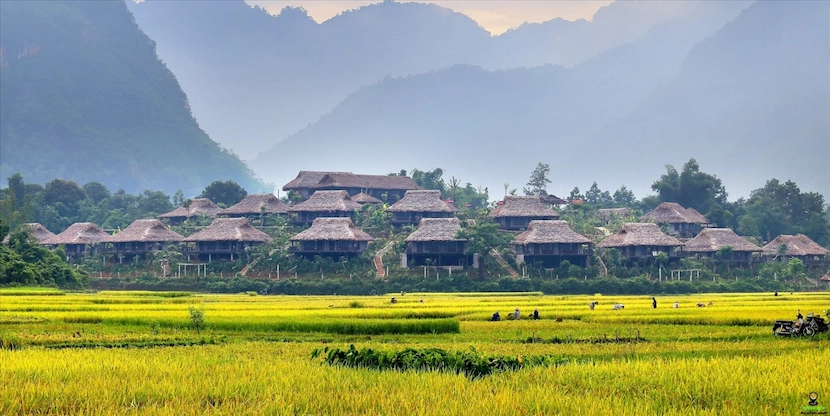
From there, it’s an easy ride or walk to Pom Coong and Na Phon, where the atmosphere becomes quieter and more reflective. These villages are less commercial but just as scenic, with narrow paths winding through fields, gardens, and clusters of stilt homes. Whether you're cycling or walking, the views are peaceful and postcard-worthy — rice paddies stretching into the distance, children playing in the yard, and water buffalo grazing nearby.
Exploring all three villages takes about 1.5 to 2 hours on foot — or longer, if you prefer to slow down and soak in the atmosphere, as most visitors do. Bicycles are available at most homestays and are one of the best ways to move between the villages while soaking in the quiet rhythm of valley life.
3.3. Mai Hich Village
Located about 14 kilometers from Mai Chau town, Mai Hich is a quiet, scenic village that offers a deeper, more peaceful experience of rural Vietnam. Surrounded by mountains and crossed by clear streams, this small Thai community has become a model for sustainable tourism — one that prioritizes cultural preservation and local hospitality over mass development.

Compared to the more central villages like Lac or Pom Coong, Mai Hich feels more remote and less visited. That’s part of its charm. Life moves slowly here, and visitors are welcomed into a tranquil world of rice fields, home-cooked meals, and traditional stilt houses. It’s an ideal place to disconnect from busy travel routes and reconnect with nature and culture.
There’s plenty to do if you enjoy the outdoors — cycling through the valley, hiking along mountain paths, or even bamboo rafting on the gentle Xia Stream. For those who prefer a slower pace, just sitting on a porch, sipping tea, and watching the sunset over the rice paddies is more than enough.
Accommodation options in Mai Hich range from simple, welcoming homestays to more comfortable 3-star resorts. Whether you’re after quiet nature, meaningful cultural exchanges, or both, Mai Hich gives you an authentic slice of rural Vietnam — without the crowds.
3.4. Buoc - Xam Khoe Villages
For travelers looking to escape the usual tourist paths, Buoc and Xam Khoe villages offer a peaceful alternative deep in the hills of Mai Chau, about 25 kilometers southwest of the town center. Surrounded by lush palm forests and rolling green hills, these villages are a sanctuary of natural beauty and cultural integrity.
Time seems to stand still here. The villagers continue to farm the land using traditional methods like wet rice cultivation and slash-and-burn agriculture. Their stilt houses, made of wood and thatch, reflect a way of life deeply rooted in nature. What makes Buoc and Xam Khoe truly special is the genuine warmth of their people. Guests are welcomed not as tourists but as friends, invited to share meals, stories, and the rhythms of everyday life.
This tranquil corner of Mai Chau is perfect for those seeking a slower pace and a deeper connection to Vietnam’s ethnic heartland. It’s where silence speaks volumes, and simplicity becomes luxury.
2.5. Bang - Cun Pheo Villages
Tucked into a quieter corner of Mai Chau, Bang and Cun Pheo villages offer a deeper connection with rural life and are ideal for travelers seeking off-the-beaten-path experiences. These villages are home to the Muong ethnic group and remain largely untouched by commercial tourism. You won’t find souvenir shops or structured activities here — just open landscapes, friendly faces, and a strong sense of community.
Life in Bang and Cun Pheo moves with the rhythm of the seasons. Locals farm rice, raise livestock, and go about their day in much the same way they have for generations. Visitors are often welcomed with curiosity and warmth, especially those who take the time to engage respectfully with the community.
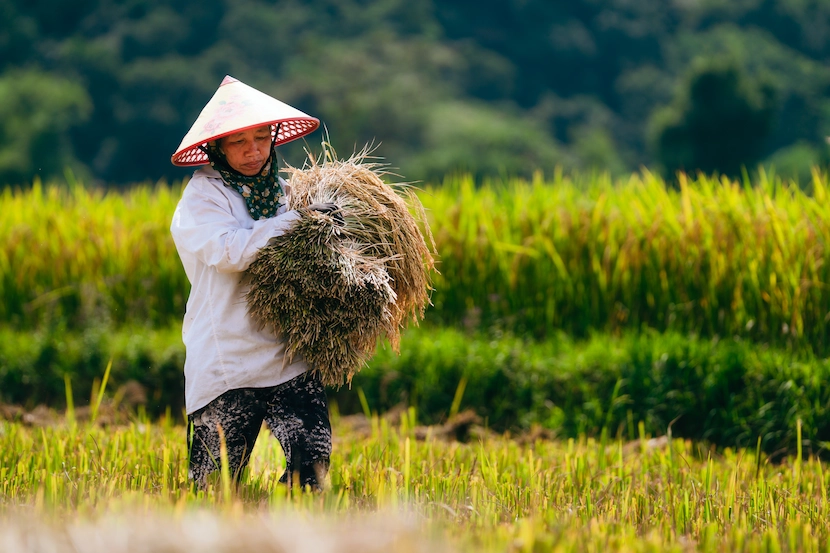
These villages are also popular stops for trekking routes through Mai Chau. Paths between the villages take you through bamboo groves, terraced fields, and quiet streams, offering a peaceful and authentic look at daily life in the countryside. If you're up for a bit of walking and want to see how life unfolds in one of Vietnam’s lesser-known corners, this is the place.
Discover the tranquil nature and culture in Bang Village
2.6. Hang Kia - Pa Co Villages
High in the mountains, about 40 kilometers from Mai Chau town, the villages of Hang Kia and Pa Co offer a completely different experience, both in scenery and culture. These are Hmong communities, and their way of life contrasts with the Thai and Muong villages of the valley. The air is cooler here, the landscape more rugged, and the traditions distinctly Hmong, from colorful clothing to batik dyeing and embroidery.
What makes Hang Kia and Pa Co special is their raw, untouched beauty. The area is particularly stunning in spring when plum and peach blossoms bloom across the hillsides, creating a soft pink and white canopy. The views are incredible — with layers of mountains stretching into the distance — and the winding roads that lead here are an adventure in themselves.
The Sunday market in Pa Co is a highlight. Hmong families from surrounding areas come to trade produce, handmade textiles, and traditional medicines. It’s one of the best places in the region to see traditional clothing and experience the energy of a local gathering.
If you’re interested in trekking, Hmong culture, or just want to experience a different pace of life in the highlands, Hang Kia and Pa Co are well worth the journey.
3. What to Do in Mai Chau
Mai Chau isn’t about rushing from one attraction to the next — it’s about slowing down, taking in the scenery, and engaging with the local culture. Whether you’re into outdoor adventures, cultural experiences, or just relaxing in a quiet setting, there are plenty of things to do in Mai Chau, Vietnam.
3.1. Hiking or Trekking
One of the most immersive ways to explore the lush countryside of Mai Chau is by setting out on foot. Gentle hiking trails wind through rice paddies, skirt along mountain slopes, and pass through quiet ethnic villages, offering stunning photo opportunities and plenty of moments to connect with locals along the way.
Thanks to its relatively flat terrain, Mai Chau’s trails are suitable for most travelers, including families with children or elderly visitors. All you need is a pair of comfortable walking shoes to enjoy a 2–3-hour hike through the valley.

For those craving a deeper adventure, consider a short trekking trip in areas like Mai Hich or Xam Khoe. These treks, lasting one or two days, offer a more off-the-beaten-path experience, with ever-changing mountain views and insight into traditional rural life. However, due to the terrain’s repetitiveness, extended treks beyond two days are not usually recommended here.
3.2. Cycling
Cycling is one of the most popular activities in Mai Chau and for good reason. The valley’s flat, quiet roads wind through scenic villages, open rice fields, and bamboo forests, creating a peaceful and easy route perfect for all ages.
Most travelers prefer to cycle in the early morning or late afternoon when the weather is cool and the light casts a golden hue over the landscape. Bicycle rentals are available at many homestays and guesthouses for about 50,000 VND per session - a small price for an unforgettable ride.
3.3. Motorcycling and motorbike taxi
If you’d rather cover more ground without the physical effort, renting a motorbike or hopping on a local motorbike taxi is a great way to go. This gives you access to more remote villages, scenic mountain roads, and hidden spots that are harder to reach on foot or bicycle.
Local drivers often double as guides, offering insider knowledge and storytelling along the journey. While the trails may be bumpy at times, the views are more than worth it. Expect to pay around 150,000 VND for a 1–2 hour ride.
3.4. Watching a traditional music show
After dinner in a local homestay, don't be surprised if you're invited to join in on a traditional dance performance by the White Thai ethnic community. Dressed in beautifully embroidered outfits, the performers, often local women, gracefully showcase umbrella dances, fan dances, and folk songs passed down through generations.
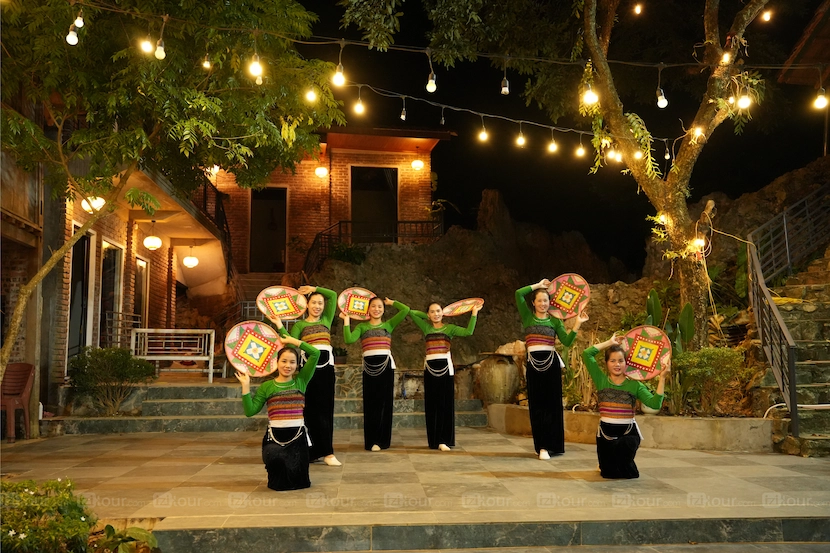
Guests are encouraged to join the fun, dancing together, sharing toasts with locally brewed rice wine, and trying their hands (and feet!) at the famous bamboo dance. It's a joyful, heartwarming experience that lingers long after the music fades.
3.5. Cooking with local people
One of the most intimate ways to connect with local culture is through food. At many homestays, you can join your hosts in preparing traditional meals, not with modern appliances, but with a humble wood stove, age-old techniques, and fresh ingredients from the garden.
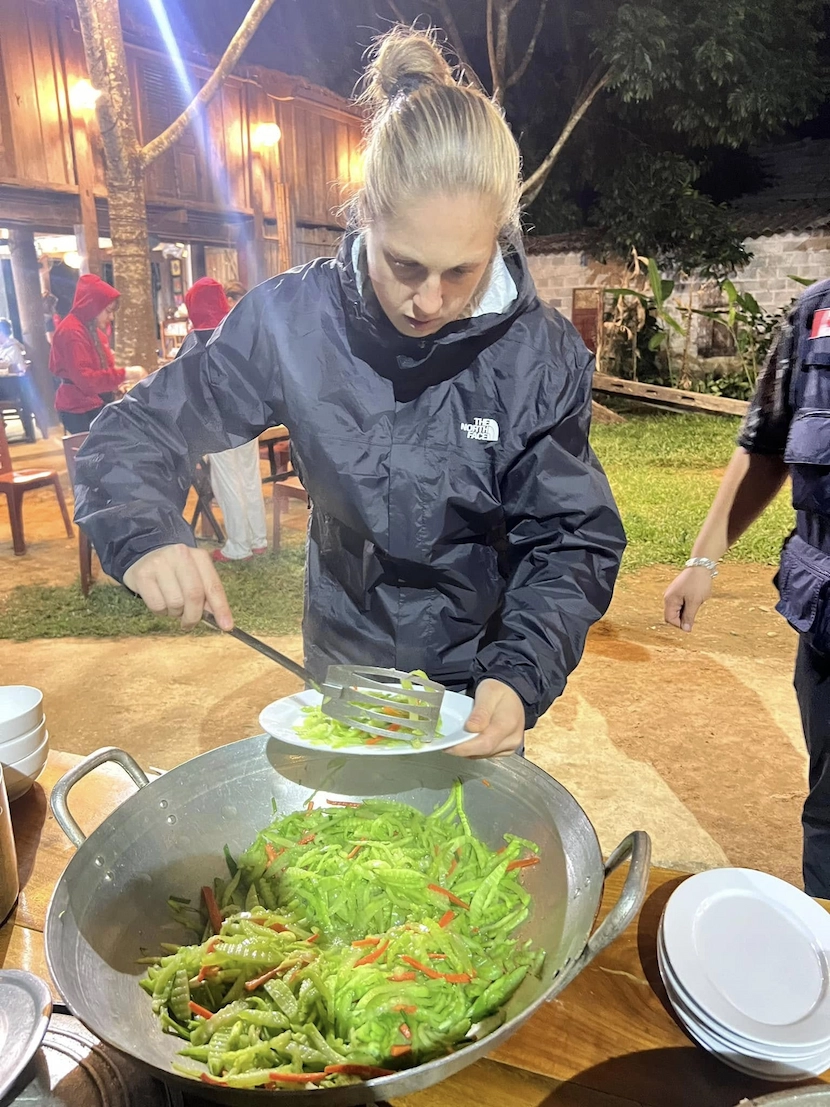
From bamboo-cooked rice to grilled meats marinated with forest herbs, the meals are simple yet incredibly flavorful. Participating in the cooking process offers a deeper appreciation for the resourcefulness and creativity of local cuisine.
3.6. Joining in farming activities (seasonal activities)
If you’re lucky to visit during the right time of year, you may get a chance to join villagers in their daily agricultural routines. Depending on the season, you could find yourself planting rice, harvesting corn, collecting firewood, or even guiding water buffalo through the fields.
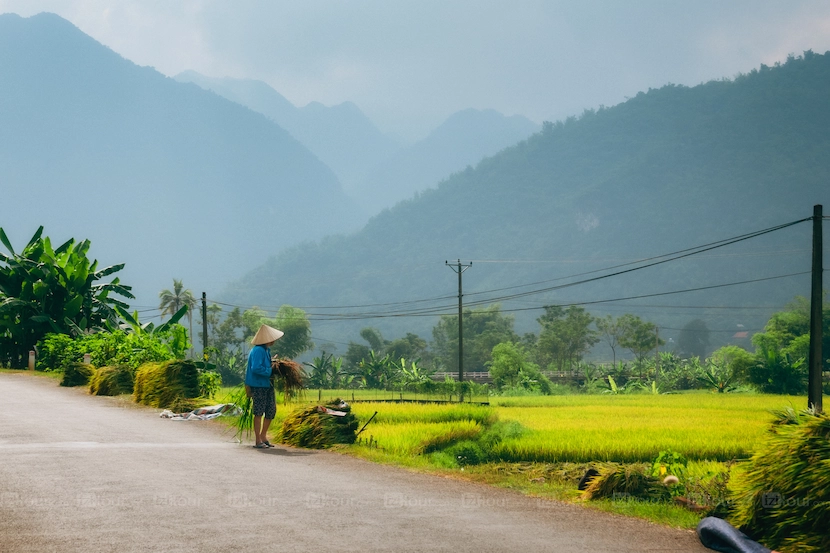
These authentic, hands-on experiences not only give you a new perspective on rural life but also allow you to form genuine connections with the people who call this valley home. Just be sure to check ahead with your homestay, as farming activities depend on the local calendar.
4. Best Time to Visit Mai Chau
Mai Chau has a mild climate year-round, making it a pleasant destination in every season. However, the best time to visit depends on what kind of experience you're looking for — especially if you want to see the rice fields at their most beautiful.
4.1. General Weather in Mai Chau
Mai Chau has a tropical monsoon climate, with two main seasons: the dry season (October to April) and the rainy season (May to September). Temperatures generally range from 15°C (59°F) in the winter to around 30°C (86°F) in the summer.
- Dry season (October to April): This is the most popular time to visit. The weather is cooler, especially from November to February, and there’s less rain, making it ideal for trekking, cycling, and exploring the villages. Nights can be chilly in the winter months, so pack layers.
- Rainy season (May to September): Expect higher humidity and afternoon showers. The landscape, however, is lush and green, and there are fewer tourists, making it a peaceful time to visit — just bring a rain jacket and be prepared for the occasional downpour.

4.2. Best Time to See the Rice Fields
So, what’s the best time to visit Mai Chau Vietnam for rice field photography or trekking? For many travelers, the rice fields are the highlight of Mai Chau, and timing your trip around the growing or harvest seasons can really enhance the experience.
- Late May to early June: This is when the rice is newly planted, and the fields are filled with water. The mirror-like paddies reflect the sky and surrounding mountains, creating beautiful, photo-worthy scenery.
- September to early October: This is the harvest season, when the rice turns golden-yellow. The fields are vibrant, the air is crisp, and the valley looks especially picturesque. It’s the best time to visit if you want to see Mai Chau at its most colorful.
If you’re looking to combine good weather with stunning rice field views, late September to early October is often considered the ideal time.
>> See more: Top 10 Spectacular Rice Fields in Vietnam You Can’t Miss
5. How to Get to Mai Chau
Getting to Mai Chau is relatively straightforward. Here’s how to get to Mai Chau from Hanoi — the most common gateway for visitors.
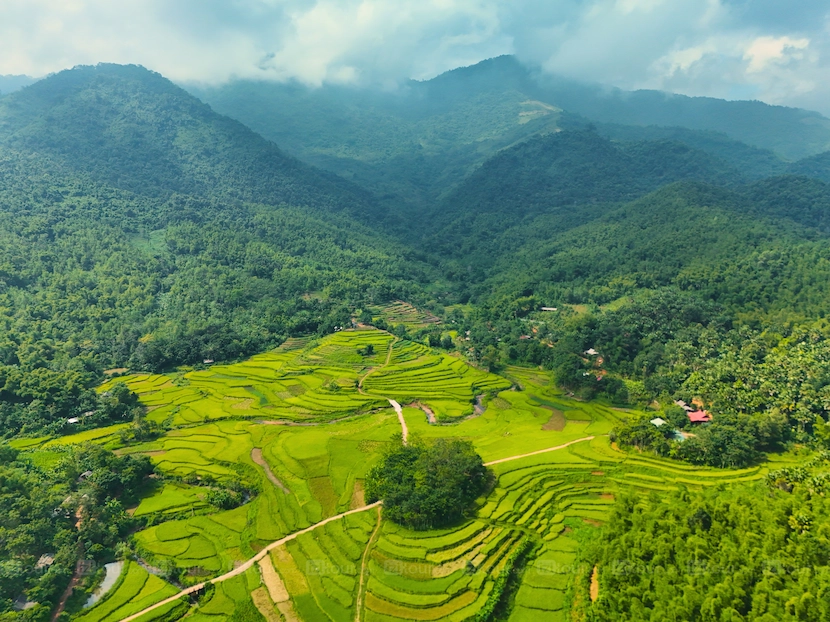
5.1. By Local Bus
Estimated travel time: 5–6 hours
Best for: Budget backpackers and local experience seekers
You can catch a local bus from Hanoi’s My Dinh or Yen Nghia Bus Station to Mai Chau or nearby towns like Hoa Binh. This is the most affordable option, but it's less comfortable and may involve a transfer.
5.2. By Motorbike
Estimated travel time: 4–5 hours
Best for: Experienced riders and adventure lovers
For thrill-seekers, renting a motorbike and riding to Mai Chau is an unforgettable adventure. The scenic route through winding mountain roads and rural landscapes is truly breathtaking. However, be prepared for a challenging ride and always ensure your safety.
5.3. By Shuttle Bus or Limousine Van
Estimated travel time: 4 hours
Best for: Budget-conscious travelers seeking comfort
Several companies operate daily shuttle buses and limousine vans between Hanoi and Mai Chau. These services typically depart from the Old Quarter and offer hotel pick-up/drop-off options. Limousine vans are more spacious and comfortable than standard buses.
5.4. By Private Car or Van
Estimated travel time: 3.5–4 hours
Best for: Comfort and convenience
The most convenient way to travel is by booking a private car or van, which offers flexibility and comfort. This option is ideal for families, groups, or travelers who want a hassle-free experience. Most tour operators, including IZITOUR, can arrange private transfers with English-speaking drivers/tour guides (also other languages such as French, Italian and others).
6. Suggested Itineraries for Mai Chau
Not sure how long to spend in Mai Chau or how to structure your visit? Whether you have two days or more, there’s an itinerary that fits. Below are some sample trips that blend relaxation, culture, and soft adventure — all of which you can book directly through our tours.
6.1. Mai Chau Itinerary in 2 Days
Authentic theme:
Day 1:
- Visit a Muong village on the way to Mai Chau
- Stop at Thung Khe Pass for panoramic valley views
- Arrive in Mai Hich village and have lunch with a local Thai family
- Walk/Bike through rice paddies and peaceful trails
- Enjoy a home-cooked dinner and a traditional music performance from White Thai people (optional)
Day 2:
- Transfer to Hang Kia, a Hmong village in the mountains
- Trek downhill through forest trails and remote farms
- Pass through Cun Pheo village and learn about Muong culture
- Lunch at a local home or small eatery
- Return to Hanoi
See Detailed Itinerary & Real-time Price
Easy exploration:
Day 1:
- Visit a Muong village on the way to Mai Chau
- Stop at Thung Khe Pass for scenic photos
- Arrive in Mai Chau and enjoy lunch
- Leisurely walk or bike through the rice fields and stilt-house communities (Lac, Pom Coong, and Na Phon villages)
- Optional: Watch a traditional Thai dance and music show in the evening
Day 2:
- Breakfast in a peaceful rural setting
- Easy walk or short bike ride around Mai Hich village
- Meet local families and learn about daily life
- Free time for tea and photos
- Return to Hanoi
See Detailed Itinerary & Book Tour
6.2. Mai Chau Itinerary in 3 Days
Day 1:
- Visit a Muong ethnic village en route
- Stop at Thung Khe Pass for panoramic views of Mai Chau Valley
- Arrive in Mai Hich village and check into your accommodation
- Enjoy lunch with a host family
- Afternoon walking tour through Mai Hich’s rice paddies, streams, and peaceful trails
- Continue trekking to the tranquil village of Xam Khoe — less touristy and rich in Thai culture
- Meet locals, enjoy tea, and observe traditional stilt-house life
- Return by vehicle to your homestay in Mai Hich
- Optional: Traditional Thai music and dance performance in the evening ($35 per group)
Day 2:
- Depart to Pa Co - a remote Hmong village
- Trek through Hang Kia commune, surrounded by plum orchards and forested hills
- Visit the Hmong people to learn about highland life
- Enjoy a picnic lunch in nature
- Trek down toward Cun Pheo Valley, a quiet Muong area
- Return to your accommodation in Mai Chau
Day 3:
- Transfer to Eo Ken, a Muong village 30 km from Mai Hich
- Trek downhill into the valley with views of Pu Luong Nature Reserve
- Visit a local Muong family to experience daily rural life
- Continue walking through forested landscapes and cross a stream to reach Ban Hang village
- Transfer back to Mai Chau town for lunch
- Return to Hanoi
6.3. Mai Chau and Vicinities Itinerary in 4 Days (Mai Chau - Pu Luong - Ninh Binh)
Day 1:
- Depart Hanoi and stop to visit a Muong village and Thung Khe scenic pass
- Arrive in Mai Hich and enjoy lunch at your homestay
- Walk or bike through the rice fields, streams, and peaceful stilt-house villages
- Meet locals, sip tea, and settle into the tranquil pace of life
- Optional: Evening traditional music and dance show ($35/group)
Day 2:
- Morning transfer to Eo Ken for a light trek through Muong communities and lush valleys
- Cross streams and continue to Ban Hang village for local culture and views of Pu Luong
- Afternoon visit to Chieng Lau — known for bamboo water wheels and scenic rice fields
- Stay overnight in Pu Luong
Day 3:
- Morning hike through Chom Uoi, Chom Lan, and Pho Doan villages
- Walk among terraced fields, streams, and quiet rural life
- Lunch in Pho Doan, then transfer to Ninh Binh (about 3 hours)
- Enjoy the peaceful countryside and mountain views along the way
Day 4:
- Morning bike ride (or transfer) along Van Long dyke with views of rice fields, river and limestone peaks
- Visit Thung La Temple and enjoy a traditional drum performance
- Take a sampan boat ride through Van Long Nature Reserve — look out for rare wildlife
- Visit an embroidery village and try your hand at stitching with local artisan Mrs. Lam
- Return to Hanoi
6.4. Mai Chau and Vicinities Itinerary in 5 Days (Da Bac - Mai Chau - Pu Luong)
Day 1:
- Depart Hanoi and enjoy a scenic 4-hour drive to remote Da Bac
- Visit Sung Village, home to the Dzao Tien ethnic group
- Walk to Sung Cave and through nearby forest trails with a local guide
- Discover traditional Dao crafts like beeswax art and indigo dyeing
- Visit a local family and the village’s cultural center preserving Dao language
Day 2:
- Trek 8 km from Sung to Da Bia, through forests and mountain paths
- Enjoy a boat ride across the Da Reservoir, then kayak to explore the lake and fishing life
- Learn about Muong culture in this peaceful lakeside village
Day 3:
- Morning walk to the pier and boat ride across Hoa Binh Lake
- Transfer to Mai Hich village in Mai Chau
- Bike or walk through rice paddies, Thai stilt-house villages, and gentle countryside trails
- Interact with locals over tea and enjoy the calm pace of life
Day 4:
- Transfer to Thanh Son and hike down to Kho Muong village, nestled in a terraced valley
- Have lunch at a local home and continue hiking to Ui village through forest and farmland
- Transfer to your accommodation in Pu Luong
Day 5:
- Morning visit to Chieng Lau, known for its bamboo water wheels and peaceful landscapes
- Take a short walk and connect with locals in the area
- Transfer back to Hanoi (4–5 hours), with optional rest stops along the way
- Arrive in the late afternoon and drop off at your hotel
Meet Ethnic People and Experience Their Life
7. Mai Chau's Cuisine
Besides charming sceneries, Mai Chau is also famous for many unique delicacies.

7.1. Sticky Rice in Bamboo (Com Lam)
One of the most popular dishes in Mai Chau is Com Lam, also known as Bamboo Tube Rice. As soon as you arrive at the Thung Khe pass, you will see locals selling a lot of it. This dish is made by placing rice in young bamboo tubes and grilling them on a wood stove. When the rice is cooked, it becomes very fragrant and delicious. You can enjoy it with sesame salt or grilled pork to enhance its flavor.
To ensure that the dish tastes great, it is crucial to choose the right type of rice that is grown in the terraced fields. This is the most important factor that contributes to the unique taste of Mai Chau's signature dish.
7.2. Muong pork
Muong Pig is a small breed of pig that is raised in natural conditions, grazing in the fields and not fed industrial foods. Due to this, its meat is lean, low in fat, and has a deliciously sweet taste. It is considered an essential specialty of the Northwest mountainous area and is a must-try for tourists visiting the region.
7.3. Hill Chickens
Hill chickens are stocked in gardens, on hills, in forests, or raised naturally. Anyone who has eaten the original Mai Chau Hill chicken cannot forget its special flavor.
7.4. Sour bamboo shoot
Bamboo shoot is a specialty of Mai Chau. It is always available in the house because people go to the forest to pick up bamboo shoots daily or make it dried to eat.
In addition to the above dishes, there are also some other unique dishes in Mai Chau for visitors who like to experience new things, such as wild bees stir-fried with sour bamboo shoots, grilled fish, mountain snails,...
>> See more: 11 Best Mai Chau Dishes You Have to Try in Vietnam
8. Where to Stay in Mai Chau?
Whether you choose a rustic homestay or a luxury ecolodge, where to stay in Mai Chau depends on your travel style and itinerary, and Mai Chau offers a wide range of places to stay. Most accommodations blend local charm with modern comfort — and no matter your budget, you’ll find something that fits. Here are some recommended options:
Suggestions for a place to overnight in Mai Hich
Mai Chau Villas 3*
Ideal for travelers who want a bit more comfort while staying close to nature. The villas offer private rooms with ensuite bathrooms, a small swimming pool, and a quiet location near rice fields — a nice balance of rustic and relaxed.
- Add: Cha Lang village, Mai Hich commune
- Price: From 53 USD/room/night (including breakfast)
Tu Diep Homestay
A cozy, family-run homestay offering an authentic stay in a traditional stilt house. Expect warm hospitality, home-cooked meals, and peaceful surroundings. It’s perfect if you want to connect with local life in a more secluded setting.
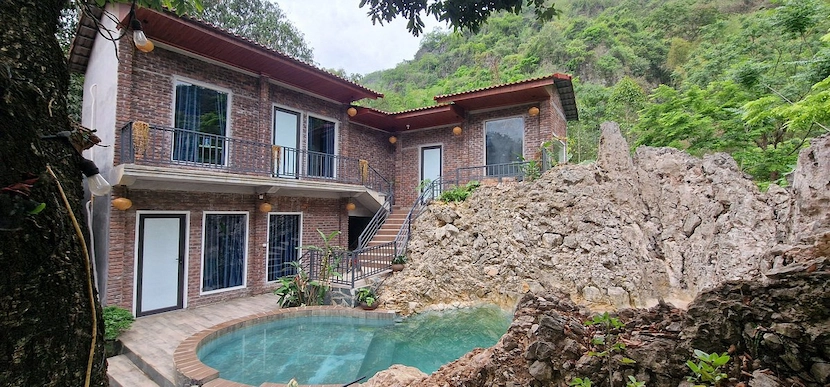
- Add: Hich 2 village, Mai Hich
- Price: 15 USD/pax (including dinner and breakfast) or 30 USD/double bungalow (including breakfast)
Suggestions for a place to stay overnight in Mai Chau
Avana Retreat 5*
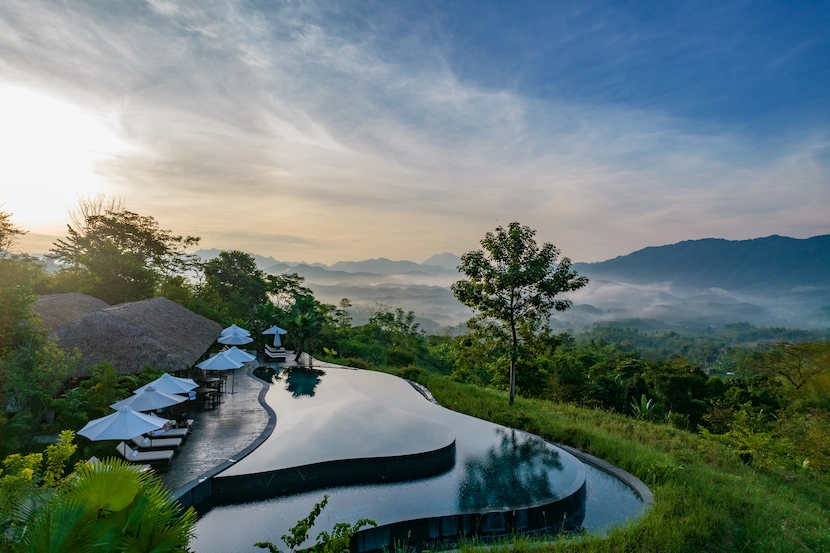
A luxurious eco-retreat nestled in the hills above the valley. Avana offers spacious villas with stunning views, a spa, infinity pool, and farm-to-table dining. It’s the top choice for travelers looking for serenity, privacy, and premium service.
- Add: Panh Village, Bao La Commune
- Price: From 250 USD/room/night (including breakfast)
Mai Chau Ecolodge 4*
Set on a hilltop with panoramic views, this ecolodge features bungalow-style rooms inspired by local architecture. It includes a restaurant, spa, and swimming pool, and emphasizes sustainability and cultural immersion — perfect for nature-loving travelers.

- Add: Na Thia village, Na Phon Commune, Mai Chau
- Price: from 70 USD/room/night (including breakfast)
Sol Bungalow Resort 4*
Surrounded by rice fields, Sol Bungalow offers stylish rooms with modern amenities and mountain views. It has a restaurant, pool, and friendly staff, making it a comfortable option for families and couples alike.
- Add: Chieng Chau Village, Mai Chau Valley
- Price: From 92 USD/room/night (including breakfast)
Mai Chau Valley View Hotel 3*
A centrally located hotel that offers great value for money. Rooms are clean and simple with views of the surrounding countryside. It’s a solid choice if you want easy access to town while still enjoying the peaceful valley setting.
- Add: Mai Chau town
- Price: From 34 USD/room/night (including breakfast)
9. Travel Tips to Travel to Mai Chau
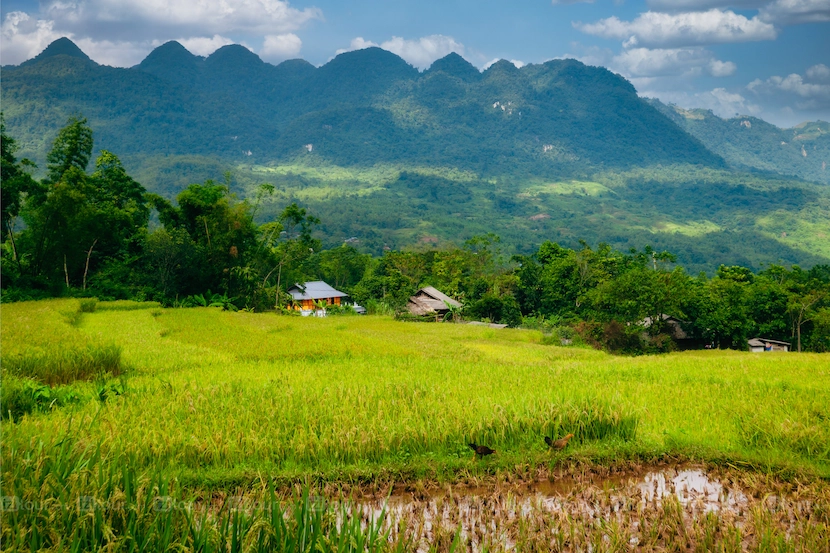
Pack light but smart: Bring breathable clothes, sturdy walking shoes, a hat, sunscreen, and mosquito repellent—especially useful if you’re staying in stilt houses or eco-lodges.
Bring cash: ATMs are limited in Mai Chau and many local businesses don’t accept cards. Make sure to carry enough Vietnamese Dong for daily expenses.
Respect local culture: Dress modestly, especially in ethnic Thai villages, and always ask permission before taking photos. A little cultural sensitivity goes a long way.
Stay in a homestay: Experience authentic village life by staying in a traditional stilt house. Enjoy home-cooked meals, friendly hosts, and peaceful rural surroundings.
Travel with a guide: A local guide can enhance your trip by sharing cultural insights, translating, and taking you to hidden gems you might otherwise miss.
Mai Chau offers a refreshing escape from the hustle and bustle of city life. With its breathtaking landscapes, warm-hearted locals, and rich cultural heritage, it’s the perfect destination for those seeking authenticity and serenity. Whether you're hiking through rice paddies, enjoying a traditional homestay, or simply soaking in the peaceful vibe, Mai Chau promises unforgettable memories.
Ready to explore Mai Chau with ease and authenticity? Let IZITOUR craft your ideal journey — from local guides and cultural immersion to seamless transfers and curated itineraries.
- Email: [email protected]
- WhatsApp at +84 382 536 266
We’re here to make your Vietnam journey truly exceptional!
Explore Most Amazing Mai Chau Tours
Read more:








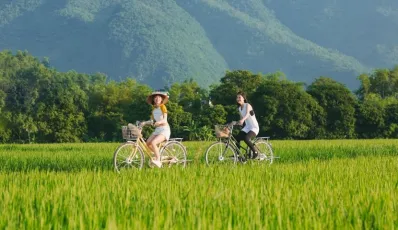
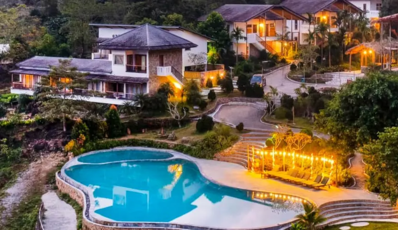
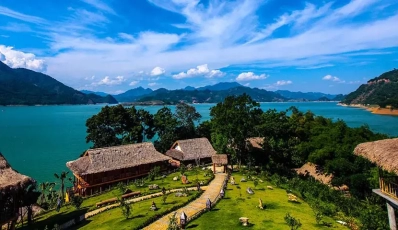
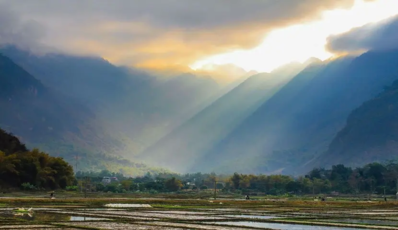


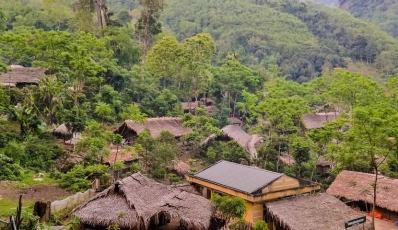
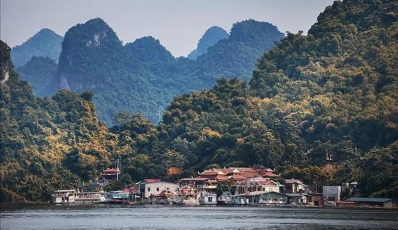
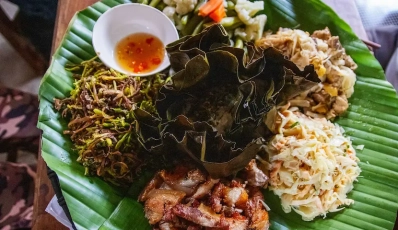
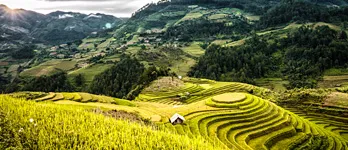
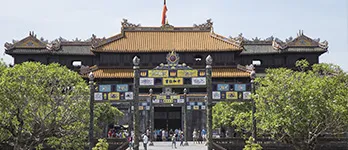
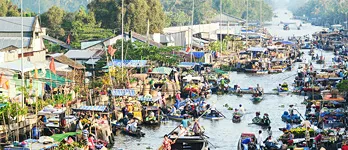

 TRAVELERS' CHOICE 2025
TRAVELERS' CHOICE 2025 